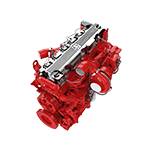Dec . 04, 2024 10:02 Back to list
brake drum reconditioning
Brake Drum Reconditioning Importance and Process
Brake drums are a crucial component of a vehicle's braking system, particularly in older or heavy-duty vehicles where they are more commonly utilized. Over time, brake drums can experience wear and tear due to constant friction from the brake shoes and exposure to various environmental factors. This deterioration can lead to reduced braking efficiency, increased stopping distances, and even complete brake failure, making brake drum reconditioning vital for safety and performance.
What is Brake Drum Reconditioning?
Brake drum reconditioning is the process of inspecting, repairing, and restoring brake drums to ensure optimal functionality. This process can help extend the life of the brake drums and improve overall vehicle safety. Reconditioning involves several critical steps, including cleaning, measuring, machining, and, if necessary, replacing components.
Importance of Brake Drum Reconditioning
1. Safety The primary role of brake drums is to provide a safe stopping mechanism for vehicles. Worn or damaged drums can lead to brake failure, risking the safety of the driver, passengers, and others on the road. Reconditioning helps maintain the integrity of the braking system, ensuring that it responds effectively when needed.
2. Cost-Effectiveness Reconditioning brake drums is often less expensive than replacing them entirely. By choosing to recondition, vehicle owners can save money while still achieving effective braking performance. This is particularly beneficial for those who use heavy-duty vehicles that require frequent braking.
3. Environmental Benefits By reconditioning rather than replacing brake drums, we contribute to less waste production. Manufacturing new drums involves resource extraction and energy consumption, which have environmental impacts. Reconditioning allows for the continued use of existing materials, making it a more sustainable choice.
brake drum reconditioning

The Process of Brake Drum Reconditioning
1. Inspection The first step involves a thorough inspection of the brake drums. Technicians will look for signs of wear, such as cracks, warping, or excessive rust. Measuring the drum’s diameter and checking for irregular shapes is also essential to ascertain if the drums can be reconditioned or if they need to be replaced.
2. Cleaning Once inspected, the drums need to be cleaned to remove any debris, rust, or brake dust. This step is crucial as contaminants can affect braking performance. Cleaning can be done through various methods, including using a parts washer, sandblasting, or chemical cleaning solutions.
3. Machining If the inspection reveals that the drums are still within permissible limits, they can be machined. This involves using a lathe to grind the surface of the drum, creating a smooth, even surface for the brake shoes to contact. Proper machining helps to correct any warping and ensures that the drums are balanced.
4. Finishing Touches After machining, the drums may require additional treatments such as painting or coating to prevent rust. This step adds an extra layer of protection and extends the lifespan of the drums.
5. Reassembly Finally, the reconditioned brake drums are reassembled onto the vehicle, along with any other necessary components. This process may also involve adjusting the brake shoes to ensure they align correctly with the newly machined surface.
Conclusion
Brake drum reconditioning is an essential process for maintaining vehicle safety and performance. By ensuring that brake drums are inspected, cleaned, machined, and properly reassembled, drivers can avoid costly replacements and potential accidents. The benefits of reconditioning extend beyond mere cost savings; they contribute to environmental sustainability and vehicle longevity. For any vehicle owner, acknowledging the importance of brake drum maintenance can lead to safer driving experiences and ultimately extend the life of their vehicle. Proper care and periodic reconditioning help ensure that we can rely on our brakes when it matters most.
-
ROR Web Development: Build Fast, Scalable, Secure Apps
NewsAug.17,2025
-
Scania Brake Drums: OEM Quality for Optimal Safety & Durability
NewsAug.16,2025
-
R.V.I: Advanced Remote Visual Inspection for Precision
NewsAug.15,2025
-
Discover HYUNDA: Innovative Vehicles, Equipment & Solutions
NewsAug.14,2025
-
R.V.I: Unlock Advanced Insights & Real-time Performance
NewsAug.13,2025
-
Kamaz Brake Drum: Durable & Reliable for Heavy Duty Trucks
NewsAug.12,2025
